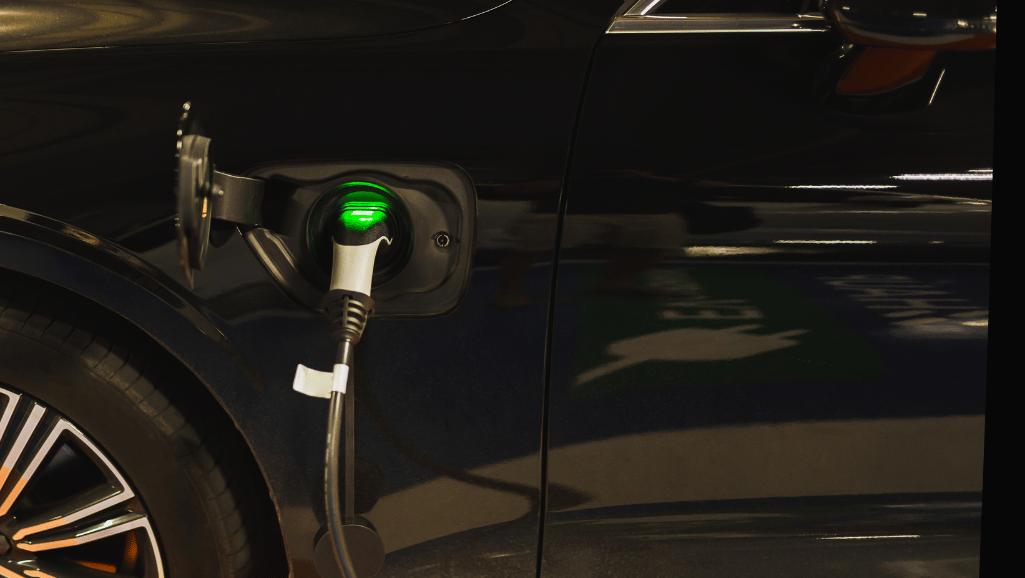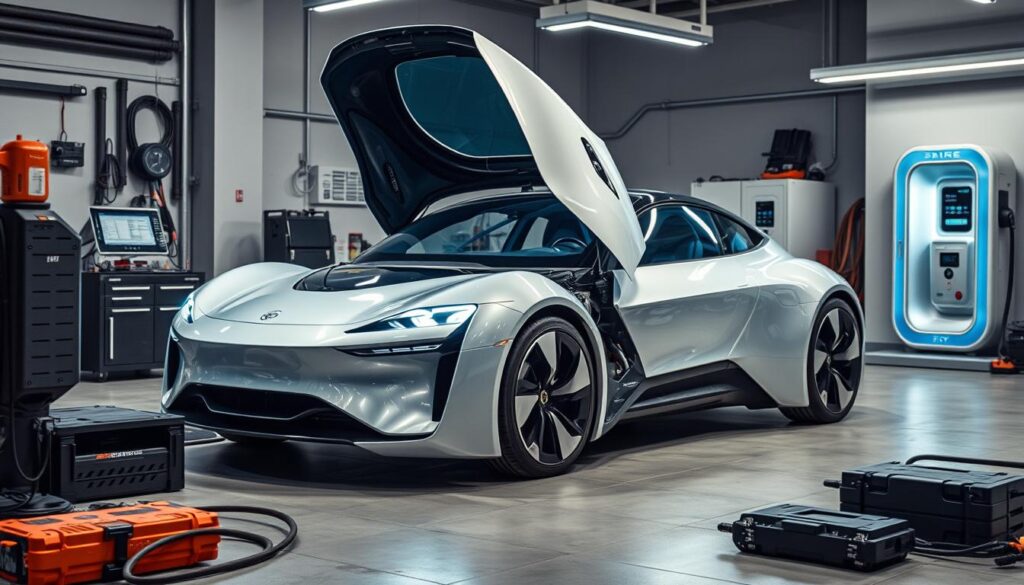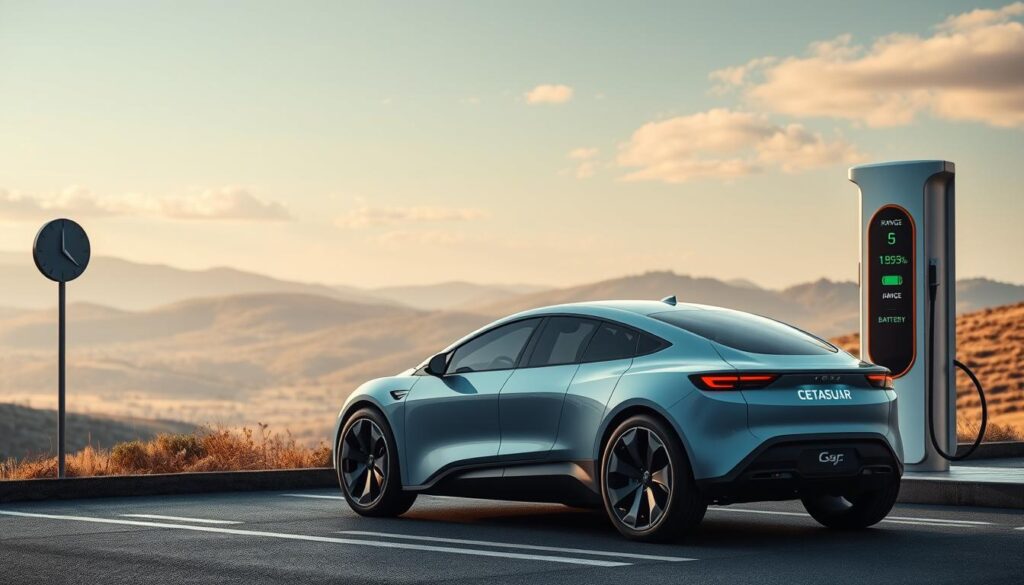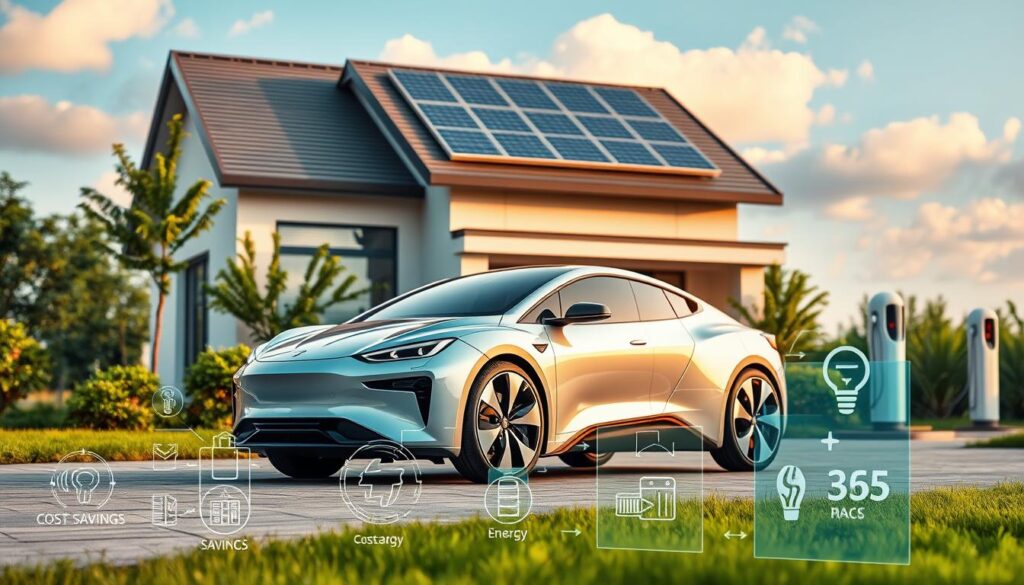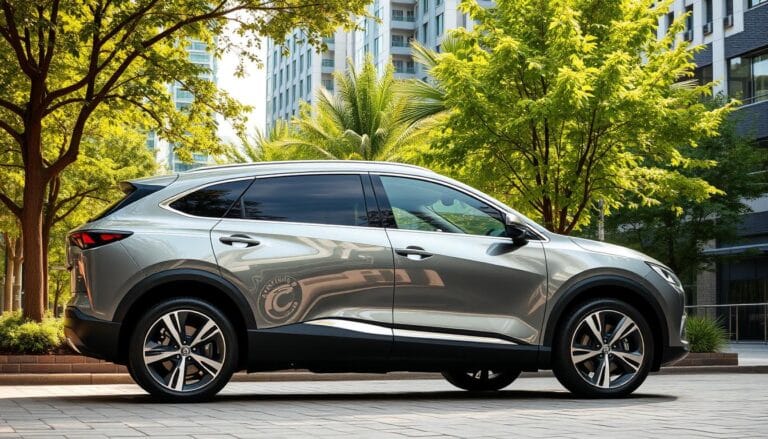Electric car sales have seen a big jump, with a 40% increase in 2022. Many people are now thinking about the pros and cons of owning an electric vehicle. EVs have many benefits, like less pollution and lower costs. But, there are also some issues to consider before switching from gas cars.
One big problem is the reliability of some electric cars. A 2022 report found that electric SUVs are the least reliable cars. This might seem odd, given that EVs have fewer parts than gas cars. But, their complex electronics and software can cause unique problems for owners.
Despite these challenges, there are also positive stories in the electric car world. The Tesla Model Y, launched in 2020, has made Consumer Reports’ recommended list for the first time this year. It’s praised for better suspension, electronics, and build quality. The Tesla Model 3 and Model Y are now seen as the top electric cars to make, based on Consumer Reports’ tests.
Key Takeaways
- Electric car sales are growing fast, but buyers should know about common issues and drawbacks.
- Electric SUVs are the least reliable cars, despite having fewer parts than gas cars.
- EVs’ complex electronics and software can cause unique problems for owners.
- Some electric cars, like the Tesla Model Y, have improved and are now recommended by Consumer Reports.
- Hybrid cars are a more reliable choice for those who want better fuel efficiency without the latest tech.
Overview of Electric Cars and Their Benefits
Electric cars are becoming more popular as an eco-friendly choice. They now match traditional cars in performance and offer economic benefits. Studies show that electric car owners are very happy, more so than those with gas cars.
Electric cars are good for the environment. They don’t produce CO2 or other harmful gases. EV drivers in the United States reduce their carbon footprint by a lot compared to gas cars.
Electric cars are also very efficient. They use less energy than gas cars. This means they save a lot of money on fuel. They also need less maintenance, which saves even more money.
Buying an electric car can also save you money. The government offers up to $7,500 off the price of some electric cars. States like New Jersey and Rhode Island offer extra incentives. These savings make electric cars a smart choice for those watching their budget. Driving an EV can save you a lot on fuel.
As electric car tech gets better, they will be even more reliable and efficient. With happy owners and fewer problems, electric cars are set to become even more popular.
Battery Longevity Concerns
Electric vehicles (EVs) are becoming more popular, but people worry about their battery life. It’s true that EV batteries do degrade over time. Yet, the impact is not as bad as many think. In fact, EV batteries are lasting longer than expected, with only 2.5% needing replacement, excluding recalls.
Temperature plays a big role in battery life. In cold places like Alaska, batteries can last up to 13.3 years. In warm places like Florida, they last about 5.2 years. Still, many experts think the battery will last longer than the car itself.
Factors Affecting Battery Life
Several things affect how long an EV battery lasts, including:
- Age
- Charge cycles
- Ambient temperature
- Driving and charging habits
On average, EV batteries lose about 2.3% capacity each year. But, new technology has made batteries better, with less loss over time. For example, cars from 2016 and newer have less than 1% replacement rates. Cars older than 2015 have 13%.
Recharging Practices to Consider
To keep your EV battery healthy, follow these recharging tips:
- Avoid charging to 100% or letting it drop below 20%
- Choose slow charging when you can, as fast charging can be harder on the battery
- Keep your car in a garage or shaded area to avoid extreme temperatures
It’s key to remember that EV batteries are made to last. Most makers offer warranties of at least 8 years or 100,000 miles. As tech gets better, future EV batteries will likely last even longer, making them a great choice for those who care about the environment.
Charging Infrastructure Limitations
The growth of electric vehicles (EVs) is slowed by charging infrastructure challenges. These include the lack of public charging stations and long charging times. The U.S. has over 100,000 public charging stations. Yet, they are not evenly spread across the country.
Installing a DC Fast Charger can cost over $100,000. This high cost stops small businesses and local governments from adding more chargers. This scarcity limits where EV owners can recharge their cars.
Compatibility Issues with Charging Ports
EV owners also face issues with charging port compatibility. Not all EVs have the same charging connector. This can cause confusion and frustration when searching for a compatible charging station. The lack of standardization makes it hard for EV owners to plan their trips.
Fast Charging vs. Standard Charging
Fast charging stations are not as common as standard ones. They can charge EVs much faster. But, their limited availability affects the convenience of owning an electric car. This is a problem for those who travel long distances or have little time to charge.
“The U.S. Department of Energy stresses the necessity for a resilient grid to accommodate the increased demand for electricity from EVs.”
As more EVs hit the roads, it’s vital to tackle these charging issues. Governments and companies must work together. They need to expand the charging network, standardize ports, and invest in fast charging. This will make charging EVs easier and more convenient for everyone.
Performance in Extreme Weather
Electric vehicles (EVs) are becoming more popular, with nearly 1.4 million sold in the U.S. in 2023. It’s key to look at how they do in extreme weather, like EV climate control and its effect on range and efficiency.
One big worry for EV owners is how range drops in extreme temps. EVs can lose up to 30% range in very hot weather. This is mainly because keeping the cabin cool uses more energy.
Impact of Cold Temperatures on Range
Cold weather also affects EVs a lot. At 20 degrees Fahrenheit, an EV’s range drops by 12 percent compared to 75 degrees. Gas cars lose about 15 percent fuel efficiency at the same cold, but EVs lose 39 percent range.
Effects of Heat on Battery Efficiency
Heat can also hurt an EV’s battery. Range drops by 17 percent in extreme heat at 95 degrees Fahrenheit. To avoid battery damage, drivers should charge in shade or at night in hot weather.
New battery tech might help EVs perform better in extreme weather. Scientists have made a new electrolyte that works well from -40 to 122 degrees Fahrenheit. Self-heating batteries could charge quickly, even at -58 degrees Fahrenheit.
EV engineers face the challenge of balancing cost, performance, and safety, while making batteries efficient in various environments and affordable.
Though extreme weather affects EVs, many owners don’t see big issues. This is if there are enough charging stations. As EV sales grow, makers are working to improve EVs’ performance and reliability in all weather.
Maintenance Challenges Unique to EVs
Electric vehicles (EVs) are becoming more popular, but they face unique maintenance challenges. Consumer Reports found EVs have nearly 80% more problems than cars with traditional engines. Issues include battery and charging system problems, as well as body and interior fit and finish issues.
Battery care is a key part of EV maintenance. EV batteries are designed to last 15-20 years under normal conditions. But, real-world conditions can affect their range. EV owners should keep their batteries between 20-80% charged to extend their life.
Understanding Battery Maintenance Needs
EVs have high-voltage electrical systems and sealed battery packs. Many manufacturers offer 8-year/100,000-mile warranties for their EV batteries. But, replacing batteries can be expensive. As technology improves, battery prices are expected to drop.
Software and System Updates
EVs need regular software and system updates for performance and safety. Many drivers face issues with in-car electronics, like failing temperature sensors. Some problems are minor, but others, like temperature sensor issues, are critical for battery safety.
Finding Qualified Technicians
Finding skilled technicians for EV maintenance can be hard. EVs still need regular brake maintenance, despite regenerative braking. Coolant must also be checked and replaced to avoid overheating issues.
| Vehicle Type | Average Issues per 100 Vehicles (PP100) |
|---|---|
| Electric Vehicles (2024) | 195 |
| Gas-Powered Vehicles (2024) | 180 |
| Plug-in Hybrid Electric Vehicles (PHEVs) | 150% more problems than traditional cars |
| Hybrid Cars | 25% fewer problems than gas-powered cars |
The electric vehicle market is growing fast, with nearly 40 million electric cars in the U.S. and a market worth of $250 billion. Addressing maintenance challenges is key for EVs’ long-term success and adoption.
Range Anxiety and Real-World Mileage
Range anxiety is a big worry for those thinking about electric cars. The distance an EV can go depends on how you drive, the weather, and using car electronics. A survey found that 80 percent of fleet managers were hesitant to switch to electric cars because of this worry.
Early electric cars could only go about 70 miles on a charge, even though makers said they could go further.
Knowing how you drive and its effect on range is key. This helps in choosing the right electric car for your needs. In North America, cars and trucks drive an average of 78 and 80 miles a day, respectively. But, only half of these vehicles need to travel over 250 miles daily.
Understanding Driving Patterns
How you drive affects an electric car’s range. Things like how fast you accelerate, brake, and use car features can impact range. Also, electric car batteries lose about 1.8% of their power each year, reducing range over time.
The table below shows the range of some electric cars:
| Vehicle Model | Estimated Range (miles) |
|---|---|
| Audi e-tron GT | 249 |
| Chevrolet Blazer | 283 |
| Ford Mustang Mach-E | 320 |
| Ford F-150 Lightning | 240 to 320 |
| Hyundai Kona Electric | 261 |
| Nissan Leaf | 149 to 212 |
| Tesla Model 3 | 272 to 363 |
| Tesla Model Y | 279 to 320 |
| Volkswagen ID.4 | 206 to 291 |
Overcoming Range Limitations
To deal with range issues, drivers can plan their trips better, keep tires at the right pressure, and use tools like EV Suitability Assessment. Tire pressure changes with temperature, affecting how far you can go on a charge.
Also, knowing where to charge your car is important. For example, the Nissan Leaf can go 149 miles on a 40 kWh battery. Most cars use CCS chargers, not CHAdeMO like the Leaf. Understanding the charging network helps in overcoming range worries and enjoying your drive.
Cost-Related Issues
Thinking about switching to an electric vehicle often makes people worry about the cost. Electric cars usually cost more upfront than gas cars. But, looking at the long-term savings and benefits is key.
Initial Purchase Price vs. Long-Term Savings
In September 2022, electric vehicles averaged $65,290, $17,200 more than the average new car. But, the gap has been getting smaller. By September 2023, the average EV price dropped by $14,300 from the year before.
In 2023, EVs were only $2,800 more than gas cars on average. This shows the initial cost is decreasing.
Electric cars save a lot of money over time. EV drivers spend about 60% less on fuel each year than gas car drivers. A 2020 study found EVs cost $485 a year to fuel, while gas cars cost $1,117.
EVs also cost less to maintain and repair, about half as much as gas cars.
| Vehicle Type | Average Annual Fuel Cost | Average Annual Maintenance Cost |
|---|---|---|
| Electric Vehicle | $485 | $330 |
| Gas-Powered Vehicle | $1,117 | $660 |
A study by NRDC found EV owners save $7,000 to $11,000 over seven years. This is compared to owners of gas cars.
Insurance Considerations
Insurance for electric cars might be different from gas cars. Some insurers give discounts for eco-friendly cars. They see EVs as safer and better for the environment.
But, others might charge more because EVs have special parts. It’s important to shop around for insurance to get the best deal.
Environmental Impact Misconceptions
Electric vehicles (EVs) are becoming more popular, but there are misconceptions about their environmental impact. EVs are often seen as eco-friendly, but there are details to consider for a full picture of their sustainability.
The source of electricity for EVs is crucial. If it’s from renewable sources like solar or wind, EVs have a much lower environmental impact. The International Council on Clean Transportation (ICCT) says an EV in Europe can cut emissions by 66-69% compared to a conventional car in 2021. This number is expected to rise to 74-77% by 2030.
Lifecycle Emissions of Electric Cars
Looking at the lifecycle emissions of EVs is important. This includes emissions from production, use, and disposal. A study by the ICCT found that a Tesla Model Y would pay off its carbon debt after about 13,000 miles in the UK.
Some reports have given wrong information, saying EVs might not be better for the climate than gas cars. But corrected figures show the VW e-Golf would pay off its carbon debt after around 14,000 miles. The Volvo C40 EV would do so after 16,000 miles, which is much lower than first thought.
Recycling Challenges for EV Batteries
Recycling EV batteries is another important issue. As more EVs are sold, recycling them becomes more critical. EV batteries contain valuable materials like lithium, cobalt, and nickel, which can be reused. But recycling these batteries is still a developing field.
Work is underway to improve recycling infrastructure and technology. Car makers like Volvo aim to sell only electric cars by 2030. This shows the need to tackle the lifecycle impact of EVs.
Despite challenges, EV adoption is growing. In 2022, EVs made up one in every seven cars sold worldwide. This is up from one in 70 just five years ago. As technology gets better and recycling improves, EVs will offer even more environmental benefits.
Future Trends and Innovations
The electric vehicle industry is growing fast. In 2023, 8.1 million electric cars were sold in China and 1.4 million in the U.S. This shows electric cars are becoming more popular. Companies are working hard to make batteries better, so cars can go farther and charge faster. Now, some cars can go up to 530 km on one charge.
More charging spots are being added everywhere. Governments and companies are working together to do this. In the Philippines, ACMobility has set up 48 charging stations in 23 places. The government wants to use more renewable energy by 2040. This will help more people use electric cars.
Improvements in Battery Technology
Battery tech is key for electric cars. Companies are making batteries safer, longer-lasting, and more powerful. The BYD Blade Battery uses a special material that makes it safer and more efficient. This tech is making electric cars faster and more appealing.
The Role of Autonomous Driving
Autonomous driving is changing electric cars. AI is making cars smarter and more helpful. Features like self-parking and lane assistance are becoming common. Soon, we’ll see cars that drive themselves.
This mix of electric and autonomous tech could change how we travel. It could make transportation more efficient and open up new ways to share rides. As these technologies improve, they will change the future of driving.


